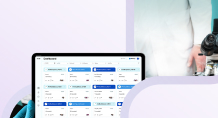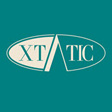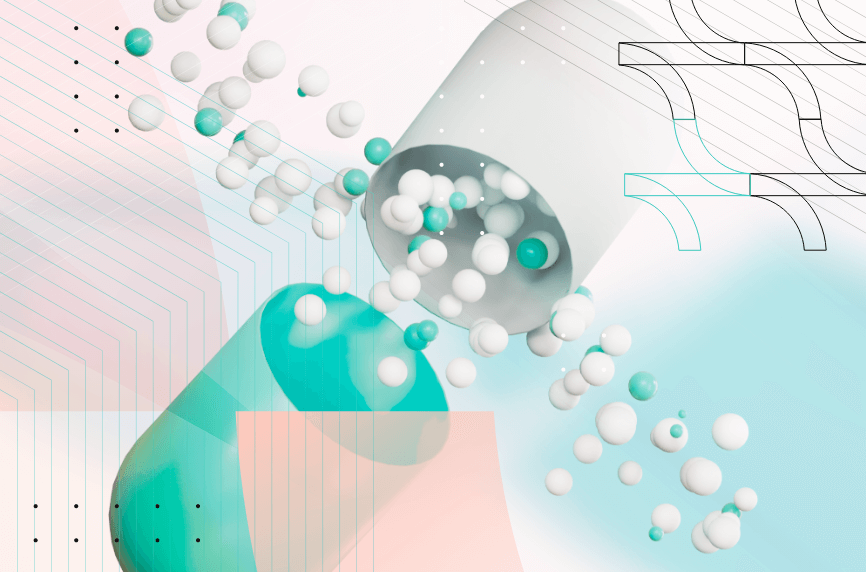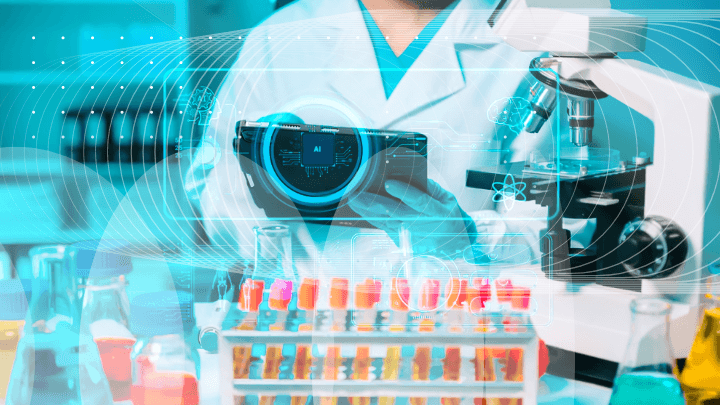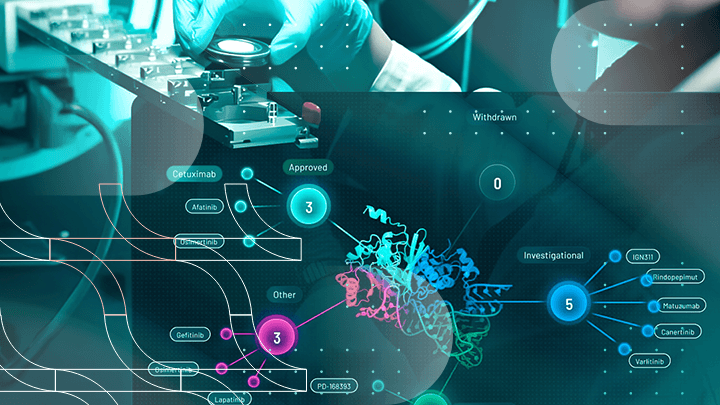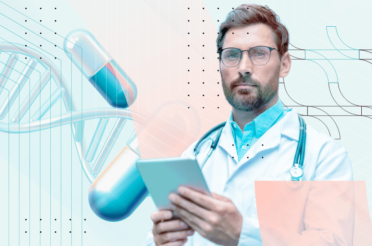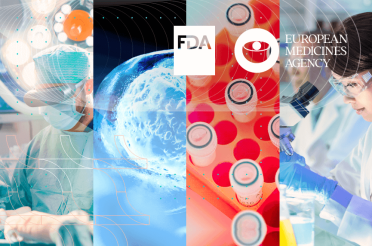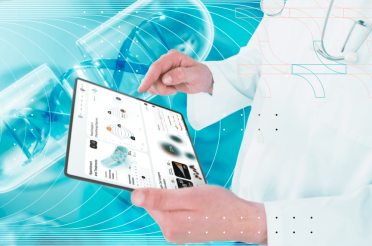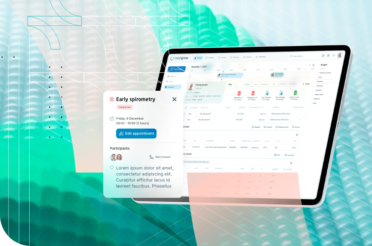In the rapidly changing landscape of pharmaceuticals and healthcare, developing new drugs is a crucial area where science and technology come together. The process of taking a drug from an initial idea to its availability on the market involves several key steps. Nowadays, integrated software solutions play an essential role in managing these challenges, paving the way for future medical treatments.
This article explores the latest trends and innovations transforming the drug development process. These advancements propel the industry towards greater efficiency, precision, and ultimately, more effective healthcare solutions.
As the demand for software applications in therapies and drug development grows, these tools are evolving to meet the needs of the industry. By speeding up the discovery of potential drug candidates and streamlining clinical trials, we can overcome many challenges in the field. These innovations also help ensure compliance with strict regulatory standards and allow for new transformations in pharmaceutical research and development.
Key steps in drug discovery
Before we discuss trends and innovations into the field of creating new medicines, let’s first take a brief look at how the process unveils.
Discovery and preclinical research
This stage is mainly meant to identify and validate potential drug candidates.
It includes a couple of important aspects:
- Thorough laboratory research;
- Utilizing computational models;
- Cell cultures;
- Animal testing.
This is all done to assess the safety and efficacy of potential drug compounds that may be used.
Step 2: Investigational New Drug (IND) application
After selecting promising candidates, the process moves to the next stage. This stage seeks to receive regulatory approval in order to move on with the trial.
This is done by submitting an IND application that includes preclinical data, study plans, and information on safety.
Phase I Trials
The subsequent clinical trials include Phase I which assesses safety and dosage in healthy volunteers.
Phase II evaluates effectiveness and side effects in a larger patient group, while Phase III confirms efficacy through large-scale, randomized trials.
Phase II Trials
This stage of the clinical testing aims to evaluate the drug’s effectiveness and side effects in a larger group of patients with the specific condition.
Phase III Trials
The following one is dedicated to confirming the drug’s efficacy, monitoring side effects, and comparing it to existing treatments.
This happens through large-scale, randomized trials involving thousands of patients.
Regulatory review
This phase ensures adherence to certain guidelines like safety, efficacy, and quality standards. The focus shifts to approval and post-marketing surveillance.
The drug can be marketed and ongoing surveillance monitors safety in real-world scenarios.
Phase IV clinical trials (post-marketing studies)
The final stage is about collecting additional information about risks, benefits, and optimal use. These studies are perfect for long-term safety and effectiveness, especially in diverse patient populations and real-world settings.
Throughout this process, collaboration between all sides is vital. This includes pharmaceutical companies, regulatory agencies, researchers, and healthcare professionals.
Discover how we can help outsource Healthcare projects efficiently Speak to an expert today, and see how our on-demand IT talent and augmented teams can efficiently deliver value at every step of your roadmap.

How does drug development software improve the process
Drug development pharmaceutical software makes the release of a safe and effective medication easier.
This can be done in various different ways throughout the clinical development phases. The most important of them we’ll discuss in detail in the paragraphs below.
Advanced computational drug screening
The process of advanced computational drug screening is an approach to drug discovery that utilizes powerful algorithms. It identifies potential drug candidates with amazing efficiency. This innovative method completely changes the early stages of drug development, offering accelerated and cost-effective screening processes.
Traditional drug discovery involves extensive laboratory experiments, which can be time-consuming and waste a lot of resources. However, computational drug screening fully uses the benefits of computer algorithms, machine learning, and molecular modeling. This predicts the interactions between potential chemical compounds and biological targets.
The key advantage of this process is its ability to analyze huge datasets and simulate complex molecular interactions. Naturally, this allows researchers to assess a multitude of potential drug candidates much faster, significantly reducing the number of compounds that need to be tested in the lab.
The entire process centers around creating virtual models of proteins involved in diseases. These are what are called biological targets. The algorithms then analyze large libraries of chemical compounds to predict their binding affinity and potential for therapeutic purposes. This predictive modeling enables researchers to prioritize the most promising candidates for further investigation.
Moreover, computational drug screening analyzes complex biological pathways and interactions, therefore identifying drug targets. This approach enhances the exploration of therapeutic principles and the discovery of new drugs.
The speed and efficiency of advanced computational drug screening accelerate the drug discovery timeline and reduce costs from traditional experimental methods. Researchers may find compounds that would have been previously overlooked using conventional means.
Despite its transformative potential, advanced computational drug screening is not a standalone solution. It complements experimental approaches, providing valuable insights that guide laboratory experiments toward the most promising candidates. This synergy between computational and experimental methods enhances the overall drug discovery process.
Integration of artificial intelligence in drug discovery
The integration of AI in drug discovery is a significant advancement that completely shifts traditional methodologies and improves the identification of potential therapeutic compounds.
Here are the uses of AI in various clinical phases during drug discovery:
- Target identification and validation: AI algorithms play a pivotal role in going through vast datasets to identify and validate drug targets. By fully utilizing machine learning models, researchers can discern the biological relevance of various targets. This way, they are guided to the ones most likely to be successful.
- Compound screening and design: Computational models, driven by AI have a significant impact on the screening process through a couple of functionalities. They analyze chemical properties and predict interactions with target molecules. This not only accelerates the screening process but also enhances the precision of identifying promising drug candidates.
- Lead optimization: When we talk about lead optimization, AI algorithms contribute to predictive modeling. This aids medicinal chemists in refining lead compounds by anticipating how chemical modifications might impact efficacy and safety. The entire drug development process is fully streamlined.
- Predictive toxicology: The application of AI is also important in predictive toxicology which is a critical component in drug development. AI models predict potential toxicities, offering an early assessment of a compound’s safety profile and reducing the likelihood of adverse effects.
- Clinical trial optimization: Clinical trials are another very substantial part of drug development. The role of artificial intelligence in optimizing them is just as important. By analyzing diverse datasets, some of which are patient records, the system improves the design of trials and their execution. This, of course, improves the chances of such trials succeeding.
- Drug repurposing: AI’s contribution to drug repurposing is noteworthy as well. By analyzing large-scale biomedical data, AI identifies existing drugs with the potential for new therapeutic indications, offering a resource-efficient avenue for expanding treatment options.
Cloud-based drug development platforms
Another vital trend in drug development software is cloud-based platforms. They are an innovation in the pharmaceutical industry. Cloud computing is powerful and using it well can enhance efficiency as well as collaboration throughout the drug development lifecycle.
By enabling real-time sharing of data and resources cloud-based drug development platforms ensure researchers, scientists, and regulatory professionals work together.
Additionally, a key aspect is the robust data management capabilities of such platforms. Pharmaceutical companies can efficiently manage the vast volumes of data generated throughout the drug development process by utilizing secure storage.
This includes data from:
- Preclinical studies;
- Clinical trials;
- Manufacturing processes.
Cloud computing provides significant computational power. This makes sure researchers and data scientists are able to perform complex analyses and simulations. Furthermore, the scalability of cloud resources ensures that future computational demands can be met.
Cloud-based solutions can provide cost-efficiency as well. By implementing a pay-as-you-go model, pharmaceutical companies can optimize resource utilization, reducing the need for extensive on-premises infrastructure. This is particularly beneficial for smaller biotech firms and research institutions with budget constraints.
Data security and the integration of advanced technologies
Security considerations in the cloud also need to be addressed. Cloud-based platforms are made to adhere to industry standards and regulations. This way they provide a secure environment for sensitive information related to drug development.
Cloud-based solutions also offer the advantage of remote access which has become an increasingly more important feature, especially with the rise of remote work. Researchers can access and contribute to projects from anywhere, fostering flexibility in workflows.
Furthermore, the importance of integrating advanced technologies within cloud-based drug development platforms is undeniable. This includes incorporating artificial intelligence, machine learning, and data analytics to derive meaningful insights from complex datasets that aid in decision-making processes.
Next-generation molecular modeling software
Drug discovery has also benefited significantly from next-generation molecular modeling software.
By implementing advanced computational techniques, these software solutions empower researchers to:
- Analyze molecular structures;
- Predict interactions;
- Simulate complex biological processes.
The capabilities extend beyond traditional methods, providing a more comprehensive understanding of drug-target interactions. They also allow for the design of new therapeutic agents with enhanced precision.
The distinguishing feature of these tools lies in their computational complexity. They leverage cutting-edge algorithms paired with quantum mechanical models and machine learning to achieve an amazing level of accuracy and prediction. This not only expedites the drug discovery process but also enhances the reliability of results.
Furthermore, this type of software finds application across various stages of drug development. These include virtual screening of potential drug candidates, predicting pharmacokinetic properties, and understanding molecular dynamics. The software’s versatility allows researchers to explore new possibilities, optimizing the identification and design of compounds while minimizing side effects.
In essence, next-generation molecular modeling software represents a significant step in the right direction when it comes to empowering scientific innovation within the pharmaceutical industry. The synergy of computational advancements and biological insights accelerates the identification of promising drug candidates as well.
High-throughput virtual screening tools
High-throughput virtual screening tools use computational algorithms to rapidly assess large compound libraries for potential drug candidates. These tools prioritize molecules based on predicted binding affinity to specific biological targets and this way expedit the identification of promising candidates for further investigation.
Operating on the principle of evaluating vast chemical spaces, these tools analyze thousands to millions of compounds quickly and provide a comprehensive overview of potential candidates. Their computational efficiency saves time and resources compared to traditional methods, accelerating the initial phases of drug discovery.
These tools simulate and predict interactions between molecules and biological targets, allowing for precise identification of lead compounds with specific binding affinities. This targeted approach advances drug discovery, aiding in the design of drugs that interact precisely with intended molecular targets.
Additionally, in advancing targeted drug discovery, these tools contribute significantly to the acceleration and efficiency of drug discovery pipelines. As they evolve, they play a pivotal role in the development of novel and more effective therapeutics, revolutionizing the landscape of drug discovery.
Machine Learning for Predictive Toxicology
Another new trend in today’s drug development software world is machine learning. It has proven to be a powerful tool in predictive toxicology, changing the way potential risks associated with chemical compounds are assessed.
By utilizing specific algorithms, machine learning models analyze given vast datasets and make predictions and evaluations on the toxicological properties of substances. This way they provide valuable insights in the early stages of drug development.
Such algorithms process diverse data like:
- Chemical structures;
- Biological activities;
- Toxicological outcomes.
By identifying patterns and relationships within this data, these models generate predictions on a compound’s potential toxicity, aiding researchers in prioritizing safe and effective candidates.
One of the key advantages is the early identification of potential risks which allows researchers to focus resources on compounds with lower toxicity profiles. This proactive approach enhances safety assessments and reduces the likelihood of adverse effects during later stages of drug development.
By integrating machine learning into predictive toxicology, the pharmaceutical industry can streamline safety evaluations and improve the overall drug development process. The ability to predict toxicological outcomes with accuracy contributes to the development of safer pharmaceuticals, aligning with the industry’s commitment to delivering effective and well-tolerated therapeutics.
Virtual clinical trial simulation software
Simulating realistic trial scenarios is a newer way of exploring a fundamentally needed field in healthcare. This software facilitates the data-driven decision-making process through advanced data analytics. This way it allows researchers to optimize their trial design and foresee potential challenges.
Additionally, pharmaceutical companies are able to identify the optimal trial parameters by mimicking patient responses in a virtual environment. The method significantly reduces costs and time that are usually due to traditional clinical trials.
The key advantage of this tech is putting patients as the focus. Researchers can observe the impact of different demographics and conditions by utilizing diverse patient populations via computers. This methodology incorporates inclusivity and ethical considerations in clinical research. It further streamlines the trial design process and meets regulatory expectations, making more efficient drug development practices.
Furthermore, virtual clinical trial simulation contributes to a more flexible and adaptive research environment. Researchers can experiment with various scenarios, adjust parameters, and refine protocols seamlessly within the virtual setting. This adaptability enhances the robustness of clinical trial designs, ensuring that studies are better equipped to handle unexpected challenges. The entire process is accomplished while maintaining ethical standards.
Real-Time Data Analytics in Drug Development
This is a technology that allows researchers to carefully monitor and analyze data as it is generated. The process enables faster decision-making and adjustments in real-time. In drug development, timely decisions can impact the entire trajectory of a project.
In such cases real-time data analytics can do the following:
- Enhance efficiency;
- Reduce risks;
- Accelerate the pace of research.
Whether it’s monitoring clinical trial outcomes, assessing patient responses, or optimizing manufacturing processes, real-time analytics offers a dynamic and responsive approach to drug development.
Digital twin technology for drug design
Another technology that is finding applications in drug design is digital twin technology.
A digital twin represents a replica of a physical drug molecule or biological system. Researchers can simulate and analyze the behavior of a drug candidate under various conditions by creating such a digital counterpart. They are also able to predict its interactions with biological targets and optimize its properties before continuing with physical experiments.
This approach thoroughly enhances the precision of drug design and allows researchers to explore the possibilities virtually before committing to laboratory experiments.
Together, real-time data analytics and digital twin technology create a newer approach to drug development. Real-time analytics provide continuous monitoring and evaluation, while digital twin technology enables predictive modeling. The combination of these technologies optimizes decision-making throughout the drug development lifecycle, from early design to clinical trials and beyond.
Blockchain Applications in Drug Development
The use of blockchain technology introduces transparency, security, and efficiency into the innovation processes connected with the development of new therapeutics.
One such application is through the management of clinical data trials. The integrity of the data is assured by blockchain, avert tampering, and consequently result in an open and traceable record of the trial results. Such actions improve the reliability of the outcome from clinical trials, build trust among stakeholders, and make compliance with regulatory requirements easier to achieve.
Another high-profile role of blockchain is in pharmaceutical supply chain management. A decentralized and secure ledger set up right from manufacturing through to distribution permits transparent tracking of drugs. This innovation fights against counterfeit and inauthentic drugs, ensuring drug safety and the authenticity of medications to guarantee enhanced drug safety. By using blockchain, pharmaceutical companies can construct a start-to-finish chain of custody for their products, giving the same satisfaction to regulators as well as end-users.
It might also mechanize the process of drug development since smart contracts involve self-executing agreements with coded terms between the involved parties. This will enable easy management in regards to activities like compliance, data contract sharing, intellectual property protection, etc. Automating such activities through smart contracts reduces administrative overhead, minimizes errors, and speeds up decision-making related to many drug development processes.
Deliver a world-class Healthcare project–with high-skilled, seamlessly integrated IT talent Learn how from our consultants. We work with clients worldwide.
Immersive visualization in drug development software
Immersive visualization, facilitated by virtual reality (VR) or augmented reality (AR), revolutionizes the analysis of complex biological data and molecular structures in drug development. This technology allows researchers to interactively explore three-dimensional molecular models, significantly expediting drug discovery.
In drug design, it enables a detailed examination of spatial relationships between drug candidates and target proteins, accelerating decision-making on viable candidates. During preclinical and clinical stages, immersive visualization aids in interpreting complex datasets, identifying biomarkers, understanding disease pathways, and predicting adverse effects.
Additionally, it enhances scientific collaboration by enabling researchers to collectively analyze data and discuss findings in virtual environments. This not only fosters connectivity but also facilitates interdisciplinary collaboration, advancing drug development efforts collaboratively.
There are numerous ways in which the future of software in healthcare is advancing. Understanding all the different varieties is vital to the improvement of anyone who is integrated into the industry. Drug development is one of the most profitable fields in healthcare and definitely subject to a lot of new technologies.
Drug development software is a powerhouse in its own right and being able to apply even better tools and practices to it, makes it even more so. The only way to advance in what he has chosen to partake in is to know more about it. When it comes to new technological trends, there is a lot to know. That is why this article can be a stepping stone on your way to learn even more.
Sources
- Advanced Computational Drug Discovery Tools
- Integrating Artificial Intelligence for Drug Discovery in the Context of Revolutionizing Drug Delivery
- Cloud-based Solutions for Drug Discovery, Development and Manufacturing Market Size & Share Analysis – Growth Trends & Forecasts (2024 – 2029)
- Machine Learning in Predictive Toxicology

